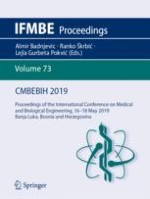2020 | OriginalPaper | Buchkapitel
Toxicity of Azo Dyes in Pharmaceutical Industry
verfasst von : Armina Gičević, Lamija Hindija, Alma Karačić
Erschienen in: CMBEBIH 2019
Aktivieren Sie unsere intelligente Suche, um passende Fachinhalte oder Patente zu finden.
Wählen Sie Textabschnitte aus um mit Künstlicher Intelligenz passenden Patente zu finden. powered by
Markieren Sie Textabschnitte, um KI-gestützt weitere passende Inhalte zu finden. powered by
